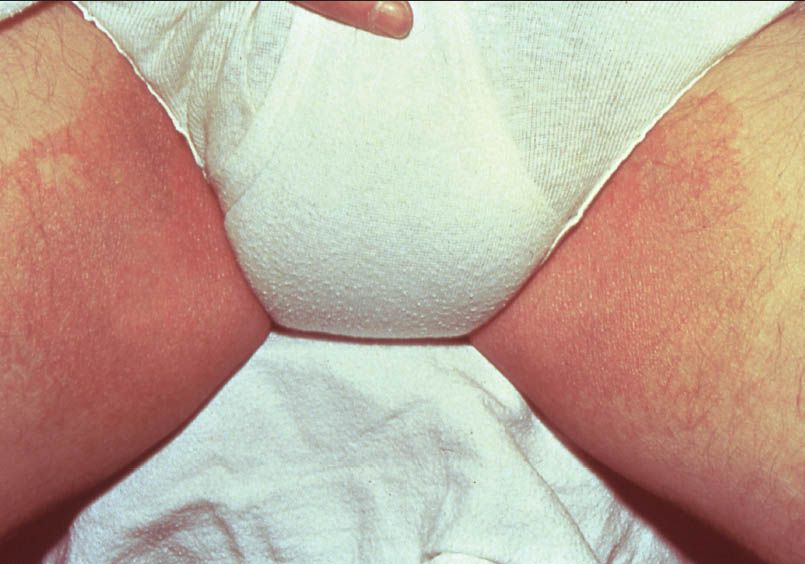- Clinical Technology
- Adult Immunization
- Hepatology
- Pediatric Immunization
- Screening
- Psychiatry
- Allergy
- Women's Health
- Cardiology
- Pediatrics
- Dermatology
- Endocrinology
- Pain Management
- Gastroenterology
- Infectious Disease
- Obesity Medicine
- Rheumatology
- Nephrology
- Neurology
- Pulmonology
Why hasn’t this groin rash responded to an antifungal?
A 28-year-old man presents for evaluation of a nonresolving rash in his groin. The rash has persisted despite the patient’s use of over-the-counter antifungal creams. What do you suspect?

Case 1:
A 28-year-old man presents for evaluation of a nonresolving rash in his groin. The rash has persisted despite the patient’s use of over-the-counter antifungal creams. What do you suspect?
A. Tinea cruris
B. Candidiasis
C. Erythrasma
D. Intertrigo
E. Seborrhea
F. Psoriasis < br />
Case 1: Erythrasma
The lack of response to antifungal therapy suggested erythrasma, C, a chronic superficial infection of the intertriginous areas of the skin. The causative organism is Corynebacterium minutissimum, which is usually part of the normal skin flora. Corynebacteria invade the upper third of the stratum corneum; under favorable conditions, such as heat and humidity, these organisms proliferate.
Wood lamp examination confirms the diagnosis. The coral-red fluorescence of scales seen under Wood light results from the production of porphyrin by the corynebacteria.
The dark discoloration associated with erythrasma is usually limited to moist and occluded body folds. Typically, the infection is asymptomatic, but it can be pruritic. Erythrasma can persist for months to years, and widespread involvement of the trunk and extremities may occur. C minutissimum is generally susceptible to penicillins, first-generation cephalosporins, erythromycin, clindamycin, ciprofloxacin, tetracycline, and vancomycin. Erythromycin is most commonly used. The infection may be treated with topical and/or oral agents. Treatment should cover all likely pathogens in the clinical setting.
